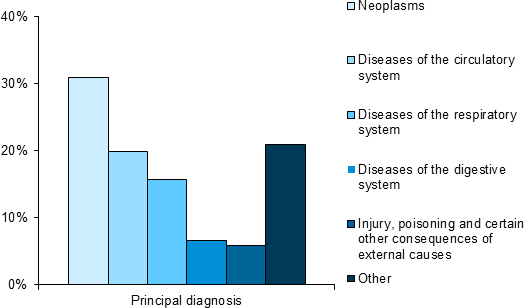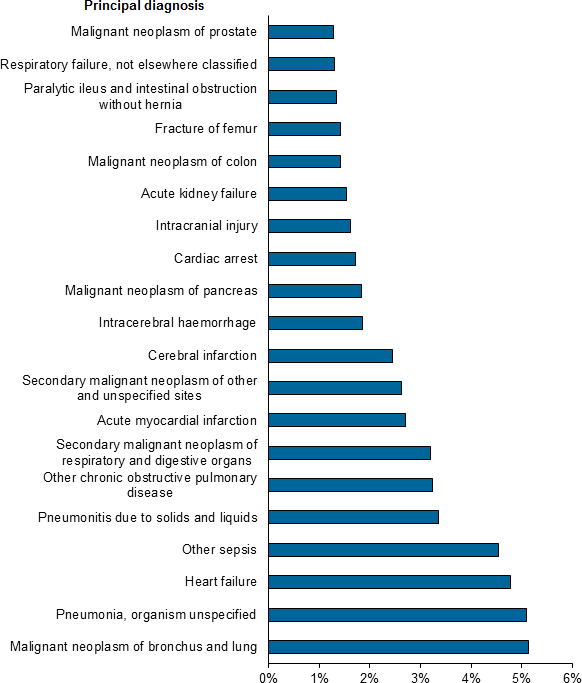Why did people receive care?
Figure 6 illustrates the five most common disease groups reported as principal diagnoses, in ICD-10-AM chapters (Box 2); they accounted for 79% (60,791) of deaths in hospital, compared with 32% of all separations (Figure 6). More than two-thirds (67%, 51,124) of deaths in hospital had one of three common disease groups: Neoplasms (31%, 23,769), Diseases of the circulatory system (20%, 15,308), or Diseases of the respiratory system (16%, 12,047).
It should be noted that admitted patient care data does not include information on cause of death, and the principal diagnosis may not have been the cause of death.
Box 2: What is the principal diagnosis and ICD-10-AM?
The principal diagnosis is the diagnosis established after study to be chiefly responsible for occasioning the patient's episode of admitted patient care.
In 2014–15, principal diagnoses were reported using the Eighth edition of the International Statistical Classification of Diseases and Related Health Problems, Tenth Revision, Australian Modification (ICD-10-AM). ICD-10-AM groups together similar conditions, organised in a hierarchy of chapters (for example, grouping diseases or disorders that affect certain body systems), subchapters and specific categories.
Figure 6: Proportion of deaths in hospital by ICD-10-AM principal diagnosis chapter, 2014–15

Source: NHMD.
The 3 most common specific principal diagnoses represented 15% of all deaths in hospital in 2014–15—Malignant neoplasm of bronchus and lung (5.1%, 3,936), Pneumonia, organism unspecified (5.1%, 3,903) and Heart failure (4.8%, 3,653) (Figure 7). The 20 most common individual principal diagnoses accounted for 52% (40,138) of deaths in hospitals.
Figure 7: The 20 most common 3-character principal diagnoses for deaths in hospital, 2014–15, per cent

Source: NHMD.


